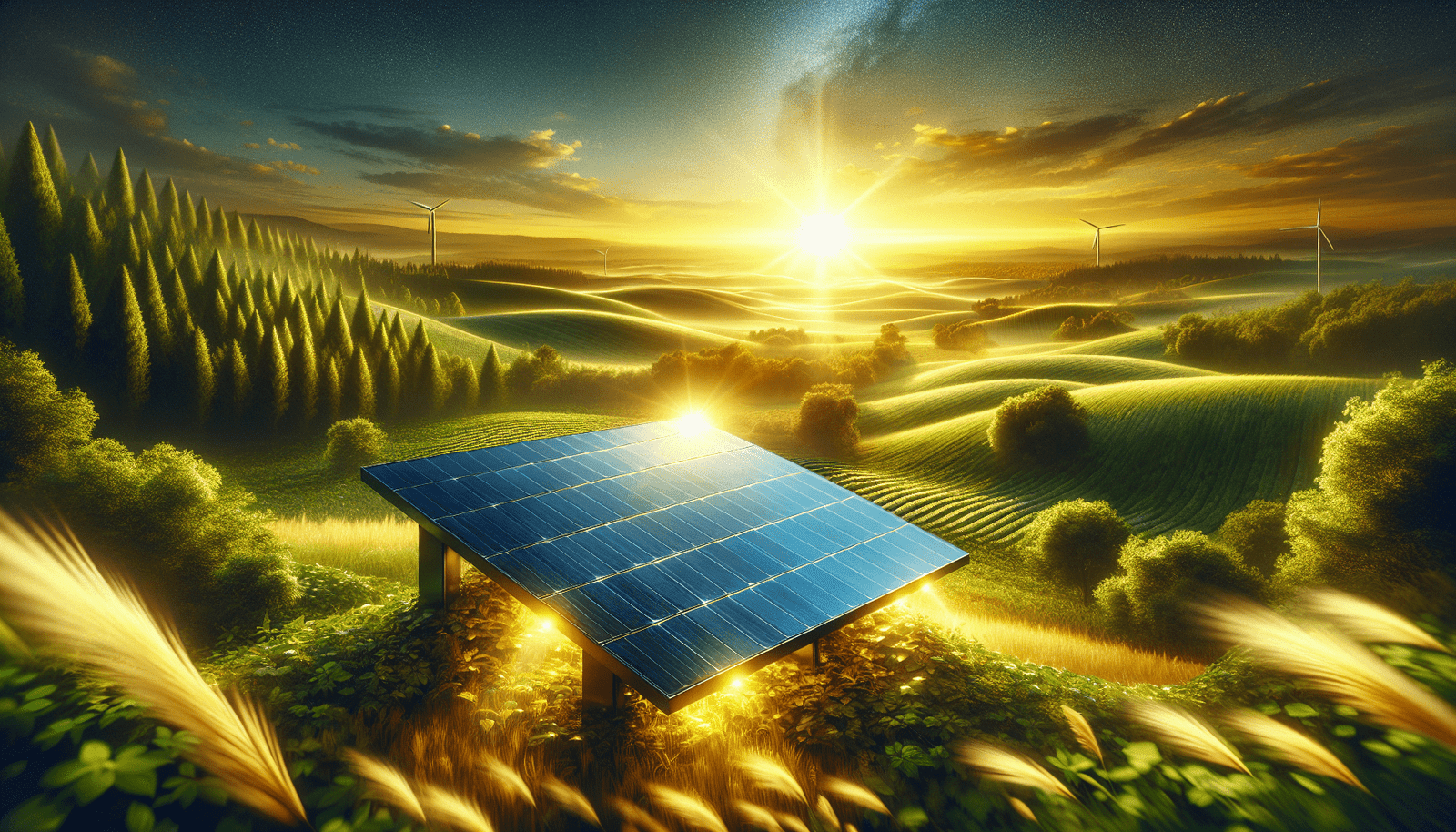What does the future hold for green technology? As I think about the advances in technology and the pressing need for sustainability, I find myself both curious and hopeful. The way we harness resources, manage our waste, and view our relationship with the planet is evolving rapidly.
Understanding Green Technology
Green technology, often referred to as environmental technology or clean tech, encompasses a wide variety of practices and products designed to minimize harm to the environment. It aims to create solutions that avoid pollution, reduce resource consumption, and promote renewable energy.
In my journey of understanding green technology, I’ve learned that it isn’t just about big innovations but also about making everyday practices more sustainable. Whether it’s through innovative materials, energy-efficient appliances, or more effective waste management systems, every little contribution matters.
The Importance of Green Technology
Why is green technology so important? The planet is facing alarming challenges such as climate change, resource depletion, and pollution. The adoption of green technology can significantly mitigate these issues.
Innovations in this field challenge the traditional ways of operating in various industries, making strides toward a more sustainable future. My heart swells with hope each time I see developments that challenge what’s possible, reminding me that we can take a step towards a more sustainable way of living.
Key Areas of Green Technology
When thinking about green technology, there are several key areas I’d love to discuss. Each plays a unique role in the path towards sustainability.
| Area | Description |
|---|---|
| Renewable Energy | Energy generated from renewable sources like wind, solar, and hydro. |
| Energy Efficiency | Using less energy to provide the same service, such as LED lighting. |
| Green Building | Sustainable construction materials and designs aimed at reducing energy consumption. |
| Waste Management | Innovative methods to recycle and reduce waste. |
| Sustainable Agriculture | Practices aimed at producing food sustainably while protecting the environment. |
Each of these areas makes a significant impact, and they intertwine in ways I could never have imagined. A circular economy, for example, integrates these sectors, reducing waste and making the most of our resources.
Renewable Energy
One of the most prominent aspects of green technology is renewable energy. As a person who closely follows this space, I can tell you that renewable energy sources like solar, wind, and hydroelectric power are pivotal in our quest for sustainability.
Solar Energy
I have always been fascinated by solar energy. It’s amazing how the sun, a constant presence in our lives, can be harnessed to power homes and businesses. Solar panels convert sunlight into electricity, providing a clean, renewable energy source.
The technology continues to evolve, with advancements aimed directly at increasing efficiency and reducing costs. It fills me with optimism to think that one day, we may see solar panels seamlessly integrated into buildings rather than just placed on rooftops.
Wind Energy
Wind energy is another exciting area of renewable energy. Large turbines harness wind power to generate electricity, and this method has made significant strides. I can’t help but admire the sight of these towering giants standing tall against the blue sky, silently creating energy as they turn with the breeze.
Countries across the globe are investing in wind farms, recognizing their potential to create vast amounts of clean energy. As more advancements are made, I believe we’ll see even more innovative designs that enhance efficiency and lower costs.
Hydroelectric Power
Hydroelectric power remains one of the oldest forms of renewable energy, yet it continues to play a crucial role. By capturing the flow of water from rivers, we create electricity without emitting greenhouse gases.
I’ve often wondered about the balance between harnessing this power and preserving natural ecosystems. It’s essential to strike a harmony that allows for energy generation while protecting wildlife and habitats, a challenge that many engineers and environmentalists are actively addressing.
Energy Efficiency
Another major component of green technology is energy efficiency. It’s not always about finding new sources of energy; sometimes, it’s about using what we have more wisely.
Smart Buildings
My interest in smart buildings has grown significantly. These structures use technology to optimize energy usage. For example, smart thermostats can adjust temperature settings based on occupancy or time of day, which helps reduce unnecessary energy consumption.
I find it fascinating how these systems can learn and adapt to our habits, creating environments that are not only comfortable but also energy-efficient.
Transportation Efficiency
The transportation sector has also embraced the concept of energy efficiency. Electric vehicles (EVs) are a prime example of this movement. EVs produce fewer emissions and can be powered by renewable energy, making them a sustainable choice.
As the infrastructure for EVs expands—think charging stations and maintenance services—I’m excited about the prospect of mass adoption. Every day I see more and more electric cars on the road, and I wonder how much cleaner our air will be in the near future.
Green Building
Sustainable architecture has gained increased traction over the years. I love the idea of buildings that work in harmony with their environment.
Sustainable Materials
The choice of materials is crucial in green building. Innovations in sustainable materials—like recycled steel, bamboo, and rammed earth—are leading to structures that have a lower environmental impact.
As I witness these materials gain popularity, I become more excited about our ability to construct beautiful buildings that don’t contribute unnecessarily to landfills.
Energy-efficient Design
Design plays an essential role in green buildings. Among the trends I see today are designs that maximize natural light and improve airflow, leading to lower energy consumption.
I’ve often been inspired by homes designed to use less heating and cooling—think strategically placed windows or natural vegetation providing insulation. These designs translate into lower utility bills and a reduced carbon footprint.
Waste Management
Effective waste management is critical in our journey toward a sustainable future. The manner in which we handle our waste has implications for the environment and our health.
Recycling Innovations
In recent years, recycling technology has advanced significantly. I find it fascinating how recyclers are sorting materials with greater efficiency. New machines can identify and separate materials that used to be cumbersome to recycle.
There is something deeply rewarding about knowing that old materials are being reused rather than going to landfills. The more we understand the value of our waste, the better we can manage it.
Composting
As someone who loves gardening, composting has become a personal passion of mine. Turning organic waste into nutrient-rich compost is a great way to reduce what ends up in landfills.
Composting is surprisingly simple and enhances soil health, allowing gardens to flourish. I often find myself encouraging friends and family to embrace this practice—it’s such an easy way to contribute to sustainability in our backyards.
Sustainable Agriculture
The food industry is one of the major contributors to environmental issues, and sustainable agriculture is an exciting area where green technology can shine.
Organic Farming
Organic farming respects the natural ecosystem by avoiding synthetic fertilizers and pesticides. As I learn more about organic practices, I’ve come to appreciate how they foster biodiversity and promote healthier soils.
Many studies suggest that organic farming can produce food while maintaining a balance with nature, ultimately leading to a more sustainable food system. I enjoy supporting local farms that practice organic methods whenever possible.
Vertical Farming
Vertical farming is an innovative approach that I find particularly exciting. By growing crops in vertically stacked layers, we can maximize the use of space, water, and nutrients. This technology is especially relevant in urban areas where land is limited.
It’s amazing to think about how this method can provide fresh produce closer to cities, reducing transportation emissions and offering food security. I often dream about seeing more of these farms in urban settings, bringing agriculture right into the heart of our communities.
The Role of Policy and Education
As I ponder the future of green technology, it’s crucial to recognize the roles of policy and education. Sustainable practices may advance through innovations, but effective policy frameworks can facilitate their widespread adoption.
Government Initiatives
Government initiatives play a vital role in promoting green technology. I’m encouraged to see various governments worldwide investing in renewable energy, providing incentives for energy-efficient upgrades, and establishing regulations to curb pollution.
Policies that support green initiatives can transform industries and inspire communities to adopt more sustainable practices. The future truly looks bright when I see these commitments unfold.
Community Education
Education also plays a fundamental role. Raising awareness about the benefits of green technology empowers individuals to make informed choices.
Conversations with friends and family about sustainability practices have revealed that many people want to help but may not know where to start. I hope we can continue to create spaces for those conversations so that we can inspire action.
The Future of Green Technology
As I reflect on the future of green technology, I can’t help but feel optimistic. The intersection of innovation, policy, and education is fostering an environment ripe for change.
The Role of Innovation
Innovative startups and research initiatives continuously push the boundaries, creating solutions I never thought possible. As new technologies emerge, from battery storage to carbon capture, I am excited to see how they will reshape the landscape of green technology.
Community Involvement
Ultimately, I believe that the success of green technology hinges on community involvement. Collective action, whether through small lifestyle changes or larger community programs, can drive significant impact.
I want to feel empowered to encourage my community to adopt green practices, whether that’s hosting a local cleanup, promoting recycling efforts, or sharing knowledge about sustainable living.
Conclusion
So, what does the future hold for green technology? I remain hopeful and excited about the direction we’re heading. The potential for positive change is immense, and every individual, community, and policy decision can contribute to a more sustainable planet.
As I engage with this subject, I am continually inspired by the resilience of our planet and the creativity of those dedicated to protecting it. Together, we can navigate towards a future where green technology becomes not just an option, but the standard way of living.






